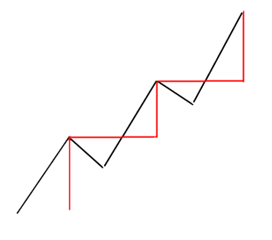I thought it would be helpful to write-up how ClimbPro works on the Edge.
This write-up is based on the recent 5.50 software release.
New in Build 5.50 is
Estimated time to the top of the climb
I thought it would be helpful to write-up how ClimbPro works on the Edge.
This write-up is based on the recent 5.50 software release.
New in Build 5.50 is
Estimated time to the top of the climb
Thanks, great work!
I still have a question: Does ClimbPro work with a loaded track, which is in "always show" mode only? (not sure if it is the right term - i am using the german version...)…
No, currently ClimbPro is only active when navigating a saved course.
It is the average grade left to the top of the climb.
It's value is somewhat limited. The color coding of the grade on the profile for the next section has more value.
C) Certainly it is not the only problem for me. The next one is that the total of the ascents of climbs shown in ClimbPro can be MORE (!!!) than the remaining total ascents shown as a navigation datafield, which is rather illogical, isnt it?
It would be interesting to see the course where this happened.
Demotivating phenomenon: I am on a climb of ascent of 200 m and I have already climbed 50 m , but it does not always mean that the remaining total ascent of the whole course navigation has decreased by 50 m. It can be much less in reality. It implies as if ClimbPro and course navigation used different source data. Can it be this way? I couldnt find any logical reasoning.
I suspect Climbro is determining ascent remaining by using the red path. Your elevation gain (past) is determined using the black path.

Note that you could, for example, turn around to go downhill and reclimb a certain segment. If you did that, it wouldn't be reasonable to count that duplicate gain towards ascent remaining (since the ascent remaining hasn't changed). What ascent remains isn't strictly dependent on what you did in the past but on your position on the course (and what lies ahead of you).
If Climbpro is using the red path, then turning around and going downhill should cause the remaining ascent to increase.
Thanks dpawlyk, you are the (only) one who contributed something to make me able to understand what happened back in July when I last used ClimbPro.
If you suspect it well then the red path logics mean that the remaining ascent doesnt continuously decrease, but by sudden when you arrive at the points of “elevation step”.
To be honest I did not observe it this way, but as I remember I saw a normal meter by meter decrease.
Re point C: unfortunately I did not keep that track.
Summarizing it,
A) open (nobody confirmed the exact calculation of avg grade)
B) open (it seems nobody met the phenomenon of one sees “the elevation profile of the next climb until “go” appears, then the elevation plot disappears, the actual position does not go through the climb.”
C) open, but next time I will publish that future track here
D) open, but I will check whether red path logics can be true “in vivo”, too.
Demotivating phenomenon: I am on a climb of ascent of 200 m and I have already climbed 50 m , but it does not always mean that the remaining total ascent of the whole course navigation has decreased by 50 m. It can be much less in reality. It implies as if ClimbPro and course navigation used different source data. Can it be this way? I couldnt find any logical reasoning.
Note that the distance remaining doesn't use your accumulated ridden miles.
Distance remaining is calculated by subtracting the distance associated with the current track point from the total track distance. If you go off-course, the devices stop calculating the distance remaining and resume calculating it from the point you rejoin the track.
I mentioned the distance remaining to show that doesn't use what you did in the past (like I suspect the altitude remaining does).
There are all sorts of ways where what you did in the past can add to the mileage or the elevation gain (*).
The distance remaining and the altitude remaining is represents what's still on your plate (which has nothing to do with how much you've already eaten).
* Keep in mind that the measured gain is often different from the gain calculated using the elevation in the track. That's another reason to not have your (past) measured gain be used in calculating the remaining altitude gain.